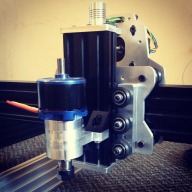890KV OX RC spindle
Discussion in 'Other Builds' started by Robert Hummel, Jan 13, 2014.
890KV OX RC spindle
Discussion in 'Other Builds' started by Robert Hummel, Jan 13, 2014.
This build is intended as a light alternative to the Dremel rotary tool.
Page 6 of 7
Page 6 of 7
